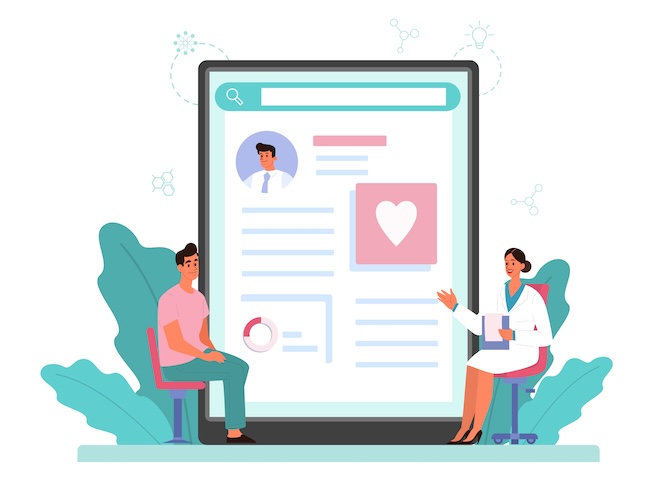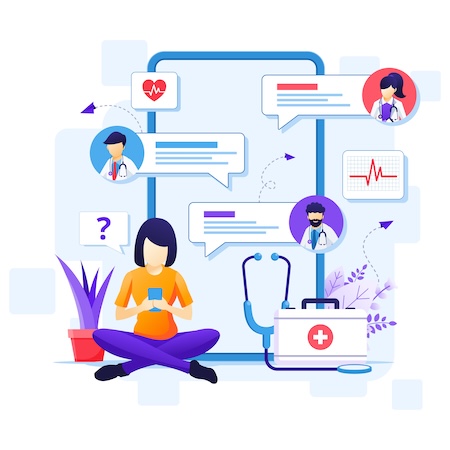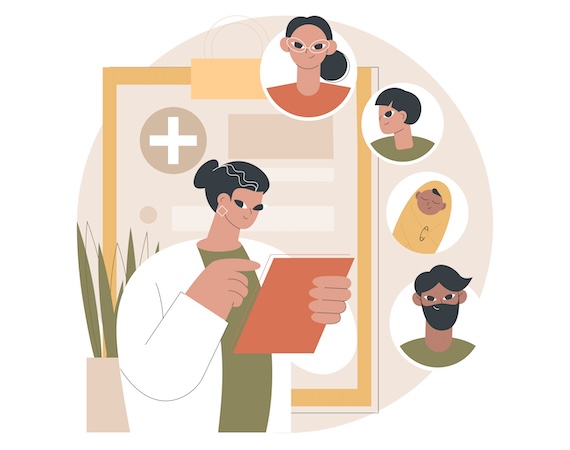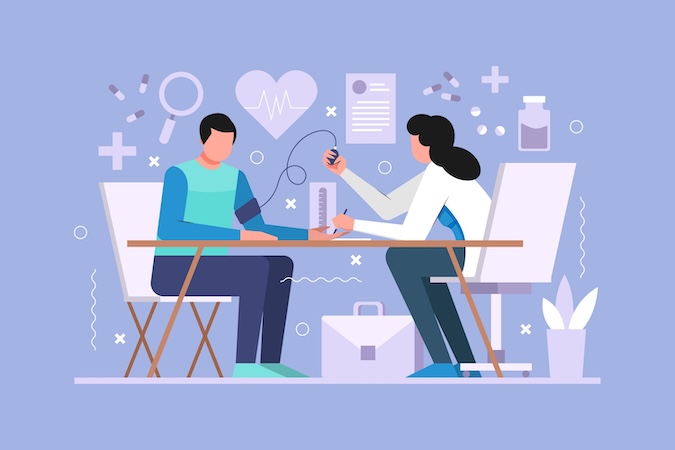I’m almost a month late on finishing my tooth implant simply because I forgot about the appointment and didn’t have a chance to reschedule. Did I get a reminder? Yes, I did, a day in advance – right before a sudden trip I had to take. I then spent an hour or so on WhatsApp to reschedule. Fortunately, I remembered to update my Calendar on the phone at that time because all I managed to get from the clinic was a photo of their CRM with a new date and time.
Hopefully, with patient engagement solutions, we can all avoid similar situations and improve our healthcare experience, especially since this affects providers, too. I kid you not; as I’m writing this intro, an email from another clinic pops on my phone offering a 25% discount. If only they handled dental implants, I’d be already off to get it — someone at this place definitely knows a thing or two about digital patient engagement tools!
Here are a few facts from recent surveys to prove I’m not alone:
- Providers offering online, mobile, and self-service interactivity are preferred by 79% of patients.
- The U.S. healthcare system incurs over $150 billion in losses each year due to missed appointments.
- A 2021 Accenture survey found that 60% of patients want digital tools for managing their health.
In this blog, we want to dive deeper into the world of patient engagement solutions for hospitals, clinics, and private practices and explain the nitty-gritty of how they can improve healthcare for both patients and providers. So, let’s get started!
Top Takeaways:
- Digital patient engagement platforms revolutionize healthcare by facilitating seamless communication between providers and patients, leading to enhanced patient satisfaction and improved health outcomes. By automating tasks like appointment scheduling, these platforms save time and costs, positioning themselves as an innovative solution for tackling the challenges of modern healthcare.
- Choosing the right digital patient engagement platform requires careful consideration of various factors. Understanding your organization’s unique needs and workflows, assessing the customization and integration options, and considering the cost and scalability of the solution are all essential steps. That’s your path to an exceptional patient engagement experience.
Table of Contents:
- What is a Digital Patient Engagement Platform?
- The Value of Digital Patient Management in Healthcare
- Key Features of a Patient Engagement Platform
- The Best Examples of Ready-Made Patient Engagement Tools
- How to Choose the Right Solution
- How Ready-Made Solution Can Solve Your Problem: Topflight’s Advice
What is a Digital Patient Engagement Platform?
A digital patient engagement platform is a software solution that helps healthcare organizations connect and communicate with their patients through various digital channels. These platforms often include features such as:
- appointment scheduling
- medication reminders
- health education materials
- remote monitoring tools
- secure messaging systems
Regardless of the features, the main focus of all patient engagement tools in healthcare is to empower patients to take an active role in managing their health and improve the overall healthcare experience.

Now that we’ve cleared the question “What is a patient engagement platform?”, let’s dive deeper into the value that patient engagement software brings to healthcare organizations.
The Value of Digital Patient Management in Healthcare
The use of digital patient engagement solutions has numerous benefits for both patients and healthcare providers. Here are some key advantages:
- Improved communication: By using digital tools, patients can easily communicate with their healthcare providers, leading to better care coordination and quicker responses to any concerns or questions.
- Increase in patient satisfaction: With access to educational materials, appointment reminders, and other features, patients feel more engaged in their own healthcare, leading to higher satisfaction rates.
- Enhanced patient outcomes: Digital solutions can help patients stay on top of their health by providing them with the necessary tools and resources to manage their conditions effectively. This leads to better overall patient outcomes.
- Time and cost savings: By automating various tasks such as appointment scheduling and reminders, healthcare providers can save time and money while also streamlining their processes.
Consequently, healthcare providers can effectively cater to a larger patient population by leveraging real-time health data (when the platform incorporates RPM capabilities). This, in turn, leads to timely and attentive care for patients, fostering a sense of loyalty and satisfaction.

As you understand, the key to enabling positive healthcare experiences for both patients and providers is capturing the whole patient journey in its entirety and automating some of these steps. The software helps us to engage patients at intake and then never drop these activities.
Read more on patient intake automation
Now, let’s see which features are essential for a patient engagement platform.
Key Features of a Patient Engagement Platform
When considering a digital patient engagement platform, here are some essential features to look out for:
- Seamless intake: Streamline the process of gathering patient information by implementing user-friendly digital medical forms and consent options. This eliminates the need for manual paperwork and provides a more efficient and convenient experience for both patients and healthcare providers.
- Self-scheduling/rescheduling: Empower patients with the ability to schedule and reschedule their appointments online with patient scheduling solutions. This convenient feature allows patients to manage their healthcare appointments at their own convenience, reducing the need for phone calls and improving overall scheduling efficiency.
- Automated reminders: Implement automated reminders to ensure patients never miss their appointments. These reminders can be sent via email, SMS, or any other preferred communication channel, helping to reduce no-shows and improve patient engagement. Read more on how to reduce no-show appointments in our dedicated blog.

- Patient-provider messaging: Enable secure and direct communication between patients and healthcare providers. This feature allows patients to ask questions, seek clarification, and receive guidance from their healthcare providers, enhancing the overall patient experience and fostering better patient-provider relationships.
- Telehealth: Embrace telehealth solutions to provide remote healthcare services. This allows patients to receive medical consultations, diagnosis, and treatment from the comfort of their own homes, improving access to care and reducing the need for in-person visits.
Related: Teledentistry software
- Online payment options: Offer convenient and secure online payment options for patients. Medical billing automation simplifies the billing process and allows patients to easily settle their payments without the need for physical transactions, improving overall financial convenience.
- Educational materials: Provide patients with access to educational materials that empower them to make informed healthcare decisions. This can include articles, videos, infographics, or any other relevant resources that educate patients about their conditions, treatments, and overall wellness.
- Informative chatbots: Implement chatbot technology to provide instant and accurate responses to patients’ frequently asked questions. These chatbots can offer guidance, provide basic medical advice, and direct patients to appropriate resources, improving accessibility and efficiency in obtaining information.
- Patient portal: Utilize a patient portal that facilitates micro-interactions, such as requesting prescription refills, scheduling appointments, or viewing test results. This empowers patients to take control of their healthcare journey and access important information securely and conveniently. Additionally, enables seamless delivery of test results through the patient portal, ensuring timely access to critical medical information.

Besides the features we’ve outlined, consider other factors, such as:
- Mobile compatibility: With the majority of people using smartphone apps, having a platform that is mobile-friendly is crucial for patient engagement.
- Customization options: Every healthcare organization has its unique needs and workflows, so it’s essential to choose a platform that can be tailored to fit those specific requirements. Most brands would need at least UI adjustments.
- Integration capabilities: A platform that integrates with your current systems (such as EMR or EHR) ensures connectivity and reduces the risk of errors.
- IoMT integrations: Leveraging the Internet of Medical Things to seamlessly integrate various medical devices and sensors, enabling efficient health data collection, analysis, and improved patient care.
- Multiplatform support: Ensuring compatibility across multiple platforms, allowing clinicians and patients to access vital information and services from their preferred devices, such as smartphones, tablets, or computers (web/mobile). With this approach, cloud-based data sharing is a must.
- Multichannel comms: Facilitating communication between patients and physicians or other doctors through various channels, including secure messaging, telehealth consultations, and video conferencing, ensuring convenient and effective healthcare delivery.
- AI/ML enhancements: Utilizing Artificial Intelligence (AI) and Machine Learning (ML) algorithms to enhance patient-provider matching, optimize scheduling processes, and enable personalized healthcare experiences, leading to improved patient outcomes and operational efficiency.
In the following section, we will delve into some examples of patient engagement tools that embody these features. However, it’s worth noting that finding all these attributes in a single product can be quite challenging, underscoring the importance of careful selection and customization.
The Best Examples of Ready-Made Patient Engagement Tools
If you’re in the market for ready-made digital patient engagement tools, here are some popular options to consider:
Doctible
This platform offers features such as online appointment bookings, e-prescriptions, and patient surveys to gather feedback. It also has a patient portal for secure communication and access to vital health information.
On the market since: 2014
Pricing model: Custom pricing based on the size of the company.
Key features: Online appointment scheduling, e-prescriptions, patient surveys, and a patient portal.
WELL Health
WELL offers a comprehensive platform that includes telehealth, appointment scheduling, and secure messaging. It also has a patient portal for easy access to medical records and test results. Additionally, it offers multilingual support for non-English speaking patients.
On the market since: 2015
Pricing model: Custom pricing based on the size of the organization.
Key features: Telehealth, appointment scheduling, secure messaging, patient portal, and multilingual support.
Luma Health
Luma Health offers a suite of features for patient engagement, including automated appointment reminders, telehealth consultations, and online scheduling. It also has a patient portal for secure messaging and access to medical records. The platform also includes AI capabilities to optimize patient-provider matching and reduce wait times.
On the market since: 2015
Pricing model: Custom pricing based on the size of the organization.
Key features: Automated appointment reminders, telehealth consultations, online scheduling, patient portal, and AI capabilities.
YourOwnMD
This platform offers a customizable patient engagement solution that includes features such as online scheduling, telehealth consultations, and secure messaging. Additionally, it allows for integration with third-party devices and applications for remote monitoring of patients’ health data.
On the market since: 2016
Pricing model: Subscription-based pricing.
Key features: Online scheduling, telehealth consultations, secure messaging, and third-party integration for remote monitoring.
Updox
This platform includes a secure messaging system, video conferencing capabilities, and online forms for patient intake. It also has a patient portal for secure access to medical records and test results. Additionally, it offers appointment reminders and automated communications to improve patient engagement.
On the market since: 2008
Pricing model: Custom pricing based on the size of companies.
Key features: Secure messaging, video conferencing, online forms, patient portal, appointment reminders, and automated communications.
Ultimately, while all of these aforementioned solutions are strong contenders for the title of “best patient engagement software,” it is crucial to understand that there isn’t a one-size-fits-all solution in this domain. Every healthcare organization has its unique needs and budgetary constraints. Hence, you should carefully evaluate each platform’s capabilities and align them with your objectives, ensuring that you wisely pick the solution best suited for your practice.
How to Choose the Right Solution
When choosing among top patient engagement solutions for your organization, here are some key factors to consider.
Your organization’s unique needs and workflows
Understanding and catering to the specific needs and workflows of your organization is crucial for selecting the right platform. Consider factors such as the size of your organization, the nature of your work, and any specific requirements or processes unique to your industry.

The level of customization and integration options offered by the platform
Evaluate the platform’s flexibility and ability to be customized according to your organization’s requirements. Look for integration options with other systems or software that are essential for your operations, such as electronic health records (EHR) or billing systems.
The cost and scalability of the solution
Consider the cost of implementing and maintaining the platform, including any upfront fees and ongoing expenses. Additionally, assess how easily the platform can scale as your organization grows or if you need to add more users or features in the future.
NB, the medical app development cost can be tricky.
User-friendliness for both patients and providers
The platform should be user-friendly and intuitive, ensuring a positive experience for both patients and providers. Look for features such as easy appointment scheduling, clear communication channels, and accessible patient portals.
Support services you can expect from a vendor
Evaluate the support services provided by the platform vendor. This includes technical support, training resources, and any ongoing assistance or customer service offered. Vendors must be responsive and able to address any issues or concerns promptly.
Ability to add new functionality
Consider the platform’s ability to accommodate future growth and changing needs. Assess whether it allows for the integration of new functionalities or modules that may become necessary as your organization evolves.

HIPAA compliance
Ensure that the platform is compliant with HIPAA regulations to protect patient privacy and data security. Look for features such as encrypted communication, secure storage of patient information, and audit logs to ensure compliance with healthcare regulations.
Also Read: HIPAA-Compliant App Development Guide
How Ready-Made Solution Can Solve Your Problem: Topflight’s Advice
At Topflight, we believe that the key to successful patient engagement lies in the seamless integration of all necessary features into one comprehensive solution. Designed with the healthcare industry’s unique needs in mind, such a platform represents a new paradigm in digital patient engagement. We have developed off-the-shelf components that elevate patient engagement:
- Telehealth: allows for real-time consultations between patients and healthcare providers, facilitating healthcare access from the comfort of home.
- Patient-Provider Messaging: This secure messaging feature ensures clear and constant communication between the patient and their healthcare provider, allowing for queries, updates, and guidance to be conveyed easily.
- Appointment Management: The platform offers intuitive appointment scheduling, modification, and cancellation functionalities, simplifying the process for both patients and providers.
- Automated Reminders: This option helps reduce missed appointments with automated reminders sent via email, SMS, or in-app notifications.
- Integration Capabilities: The platform can integrate with existing EMR/EHR systems, facilitating smoother data flow and reducing the risk of errors.
- Smart Chatbot: a platform should incorporate smart chatbot technology designed to provide instant and accurate answers to patient inquiries.
By integrating these ready-made components with your existing health software, your clinic or healthcare organization can deliver a superior patient experience while enhancing operational efficiency.
So, if you’re ready to take the next step toward digital patient engagement, reach out to us today. Together, we can make a positive impact on the healthcare industry.
Frequently Asked Questions
What makes a patient engagement platform effective?
A patient engagement platform is effective when it is user-friendly, customizable, and integrates seamlessly with existing systems. It should also enable efficient communication between healthcare providers and patients and offer tools such as appointment scheduling, medication reminders, and health education materials to help patients actively manage their health.
Can a patient engagement platform improve patient outcomes?
Yes, studies have shown that using patient engagement platforms can lead to improved patient outcomes, including better disease management, higher compliance with treatment plans, and increased patient satisfaction. By empowering patients to take control of their healthcare journey and providing them with convenient access to important information and resources, these platforms can positively impact overall health outcomes.
What role does technology play in healthcare today?
Technology plays a crucial role in modern healthcare, from enhancing communication between providers and patients to streamlining processes and improving patient care. Patient engagement solutions leverage various technologies such as AI/ML algorithms, IoMT integrations, and mobile compatibility to create a seamless and personalized healthcare experience for both patients and providers. As technology continues to advance, its role in healthcare will only become more prominent.
Can you provide a brief strategy on how clinical offices can make effective use of a digital patient engagement platform for surgery-related purposes?
Sure, we can provide a strategy for that. First, it’s essential to list all the needs and requirements of your clinical office related specifically to surgery procedures. Once you’ve identified these, you should conduct a thorough review of available digital patient engagement platforms to see which ones meet these needs. From scheduling surgical appointments to sending automated reminders to patients about pre-surgery instructions, a platform must ensure efficient and error-free management. Additionally, the usage of the platform’s secure messaging feature can enhance post-surgery recovery by allowing for clear communication between patients and healthcare providers about wound care or medication instructions. It is also crucial to note that before fully implementing a new platform, offering it as a free trial to some patients could be beneficial for gathering feedback and making necessary improvements. Finally, always keep in mind that the end goal is to enhance patient engagement and improve patient outcomes, so strategies should always be patient-centric.